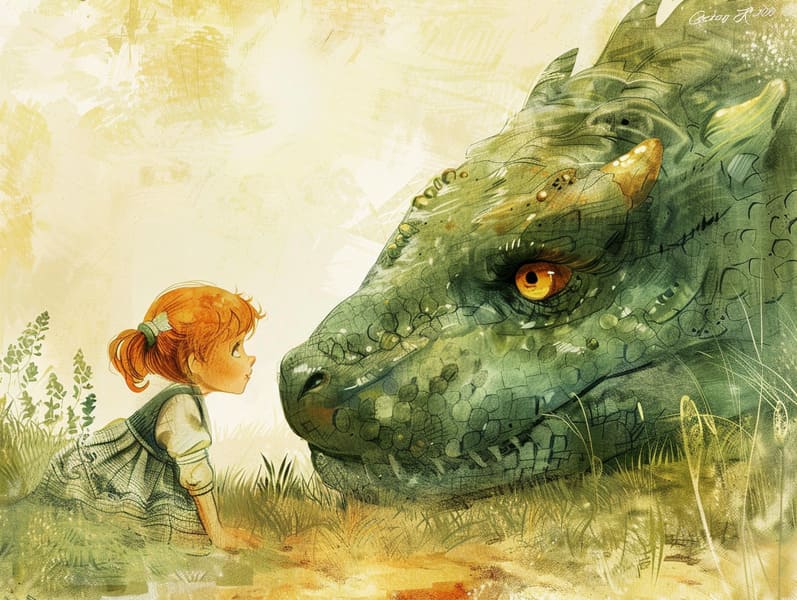The Creation of Famous Fairy Tales with the Immortal Elegance.

Famous fairy tales have old origins. These tales have been whispered from one generation to the next millennia before they were ever written down. They originated from a variety of backgrounds, including European traditions. They were initially passed along among grown-ups, often carrying themes and messages reflective of the societal norms and beliefs of the time.
Jacob and Wilhelm Grimm, Jacob and Wilhelm Grimm, were among the first to collect many of these beloved stories. Their volume, "Grimm's Fables," included narratives like "Cinderella," "The Story of Hansel and Gretel," and "The True Story of Snow White," which have since become mainstays in the world of iconic fairy tales. Similarly, Andersen's fantastical tales, such as "The Mermaid," and "The Story of the Ugly Duckling," have enchanted hearts worldwide, guaranteeing their place in the pantheon of iconic fairy tales.
Despite their historical roots, fairy tales remain as impactful as ever, especially as bedtime stories for kids. These magical stories are now available in multiple formats, including gorgeously illustrated books, captivating animations, and digital storybooks.
Their persistent charm can be ascribed to several magical reasons:
Life Lessons: Timeless fairy tales often offer important moral lessons. Stories like "The Story of the Boy Who Cried Wolf" teach the value of sincerity, while "The Story of the Tortoise and the Hare" show the merits of perseverance and meekness. These stories offer the young clear distinctions between right and wrong, molding their moral compass in a subtle yet lasting way.
Empathy and Understanding: Timeless fairy tales frequently present figures facing struggles and tests, fostering young listeners to understand with their struggles and celebrate their triumphs. For instance, "The Story of Beauty and the Beast" emphasizes the importance of looking deeper to see the inner spirit of a being, cultivating tenderness and knowledge.
Cultural Insights: Many classic fairy tales are interwoven with the cultural contexts from which they were born. Immersing in these stories can provide intriguing perspectives into different social structures, building a sense of global appreciation and recognition.
Creativity and Imagination: The fantasy-filled elements in classic fairy tales—talking beasts—generate children’s imaginative ideas. These stories bring readers to enchanted realms, activating imaginative thinking and a sense of delight that endures a lifetime.
Timeless fairy tales are not only entrancing but also instructive. They provide fascinating tools in strengthening various mind and heart abilities in kids. When fairy tales are voiced, they foster speech development by teaching new terms and elaborate sentence structures. This practice also advances auditory skills and mindfulness, as young ones remain attentive, eager to see what happens next.
Furthermore, debating the themes and characters of timeless fairy tales can cultivate evaluative skills and reasoning skills. Young readers learn to find patterns, anticipate outcomes, and catch on to cause and effect. These analyses also advance little ones articulate their thoughts and feelings, fostering their emotional intelligence.
In today’s information age, the accessibility of online storybooks has made these fairy tales more attainable than ever. Web-based platforms and software supply large libraries of famous fairy tales that can be experienced or listened to anytime, anywhere. Fairy tales narrated are particularly sought after, offering an interactive way for young readers to enjoy these alluring stories. Read-aloud stories and read-to-me videos lead characters and settings to life, often paired with enchanting sound effects and songs that augment the storytelling experience.
The timeless fascination of old fairy tales lies in their ability to transform to modern days while holding onto their central messages. Contemporary revisions of these stories often introduce more multicultural figures and modern settings, making them accessible to today’s audience. However, the basic principles of fortitude, understanding, and lawfulness remain unchanged, continuing to appeal to children of all ages.
Old fairy tales also offer a sense of calm and comprehensibility. They afford a coherent narrative with a apparent beginning, middle, and end, often wrapping up with the ending of conflicts and the triumph of virtue over corruption. This regularity can be consoling for young readers, spreading a sense of reliability in an unstable world.
Old fairy tales continue to allure and guide new generations, maintaining their fascination and relevance in modern society. As nighttime stories for kids, they impart a perfect blend of delight and instruction, promoting moral values, empathy, and creativity. The abundance of online storybooks and the favor of fairy tales recited ensure that these classic stories remain accessible to new generations.
By retaining and disseminating these narratives, we continue to revere the rich tapestry of creativity and cultural heritage. Whether you are accessing a richly illustrated book, discovering a online collection, or hearing an sound book, the delight of bedtime fairy tales is always within reach. These narratives illustrate of the unwavering spell of stories and its ability to bring us together awesome site across eras and regions.
Be it you are experiencing a artistically illustrated book, enjoying a digital library, or listening via an narrated book, the majesty of famous fairy tales is always within reach.
These tales show us of the perpetual power of tales and its ability to gather us across eras and regions, making a tie that captivates and teaches alike.